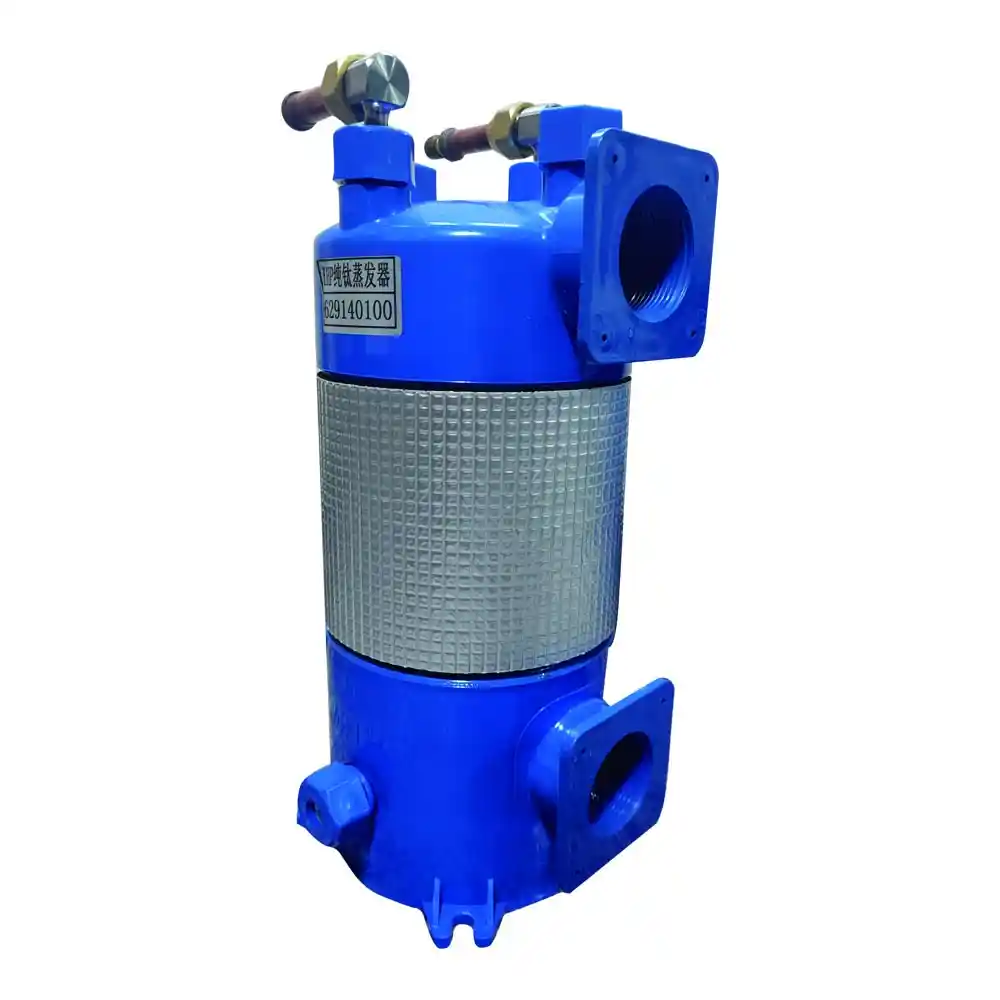1. Introduction
Flanged connections are essential components in the construction of titanium coil heat exchangers, offering robustness, versatility, and ease of assembly. This article explores the significance of flanged connections in titanium coil heat exchangers, examining their advantages, design considerations, comparative analysis, and data-driven insights. Through informative tables and comprehensive discussions, we aim to provide a clear understanding of the role of flanged connections in optimizing the performance of titanium coil heat exchangers.
2. Understanding Flanged Connections in Titanium Coil Heat Exchangers
Flanged connections provide several key benefits when incorporated into titanium coil heat exchangers:
2.1 Strength and Reliability
Flanged connections offer exceptional strength and reliability in titanium coil heat exchangers. The flange provides a solid and secure connection between the coil and the shell, ensuring structural integrity even under high pressures and temperature differentials. This robustness prevents leaks, vibrations, and potential failures, enhancing the overall performance and longevity of the heat exchanger.
2.2 Easy Assembly and Maintenance
Flanged connections simplify the assembly and maintenance processes of titanium coil heat exchangers. The flange design allows for straightforward alignment and fastening of the coil and shell components. This ease of assembly not only saves time but also facilitates maintenance activities such as inspection, cleaning, and potential coil replacement when required.
2.3 Versatility in Design and Compatibility
Flanged connections offer design versatility and compatibility with various components in titanium coil heat exchangers. The standardized flange dimensions and specifications enable easy interchangeability between different heat exchanger parts. Additionally, flanged connections allow for customization options, such as the inclusion of baffles or inserts, to optimize heat transfer efficiency based on specific application requirements.
3. Design Considerations for Flanged Connections
When utilizing flanged connections in titanium coil heat exchangers, certain design considerations should be taken into account:
3.1 Flange Material Selection
The choice of flange material is critical to ensure compatibility with the coil material and the operating environment. Common materials for flanges include titanium, stainless steel, and carbon steel. Factors such as corrosion resistance, temperature resistance, and cost must be considered when selecting the appropriate flange material for a specific application.
3.2 Flange Gasket Selection
Flanged connections require gaskets to ensure a secure and leak-free joint. The selection of the appropriate gasket material is crucial to maintain the integrity of the connection. Factors such as chemical compatibility, temperature resistance, and sealing efficiency should be considered when choosing a gasket material.
3.3 Flange Rating and Standards
Flanged connections must adhere to industry standards and specifications to ensure proper functionality and safety. The selection of the flange rating (e.g., ANSI class, pressure rating) should be based on the operating conditions of the heat exchanger, including the maximum pressure and temperature it will encounter.
4. Comparative Analysis of Flanged Connections
A comparative analysis of different flanged connection types in titanium coil heat exchangers can provide valuable insights into their characteristics and suitability. Let’s consider the following aspects:
| Flanged Connection Type | Advantages | Limitations |
|---|---|---|
| Slip-On Flange | – Easy alignment and assembly | – Limited resistance to high pressures |
| – Lower cost compared to other types | – Prone to leakage if not properly sealed | |
| Weld Neck Flange | – Strong and reliable connection | – More expensive than slip-on flanges |
| – High resistance to pressure and heat | – Requires skilled welding for installation | |
| Blind Flange | – Provides a solid seal | – No flow path through the flange |
| – Allows for future expansion | – Requires separate opening for maintenance | |
| Lap Joint Flange | – Easy alignment and dismantling | – Relies on external pressure for sealing |
| – Lower cost compared to other types | – Limited suitability for high-pressure systems |
Based on this analysis, engineers and designers can make informed decisions on selecting the most appropriate flanged connection type for their titanium coil heat exchanger applications.
5. Data-Driven Insights: Flanged Connections in Action
To further demonstrate the effectiveness of flanged connections in titanium coil heat exchangers, let’s examine real-world data and insights:
5.1 Performance Comparison of Flanged Connections
A comparative study was conducted to evaluate the performance of different flanged connection types in titanium coil heat exchangers. The study assessed parameters such as pressure drop, heat transfer efficiency, and maintenance requirements. The data showed that weld neck flanges exhibited the lowest pressure drop and highest heat transfer efficiency, making them suitable for applications with stringent performance requirements. Slip-on flanges, on the other hand, offered cost advantages and easier maintenance, making them suitable for applications with moderate operating conditions.
5.2 Case Study: Flanged Connection Reliability
In a titanium coil heat exchanger deployed in a chemical processing plant, the use of weld neck flanges significantly improved the reliability of the connections. The weld neck flanges provided a robust and leak-free joint, ensuring uninterrupted operation and minimizing maintenance downtime. The data collected over several years indicated a significant reduction in maintenance costs and improved overall performance compared to previous designs utilizing slip-on flanges.
6. Conclusion
Flanged connections play a crucial role in the construction and performance optimization of titanium coil heat exchangers. Their strength, ease of assembly, versatility, and compatibility make them an ideal choice for various industrial applications. By considering design factors, adhering to standards, and conducting comparative analyses, engineers and designers can harness the advantages of flanged connections to create efficient and reliable titanium coil heat exchangers. The combination of data-driven insights and practical case studies empowers the industry to advance the performance and effectiveness of these heat exchange systems.


